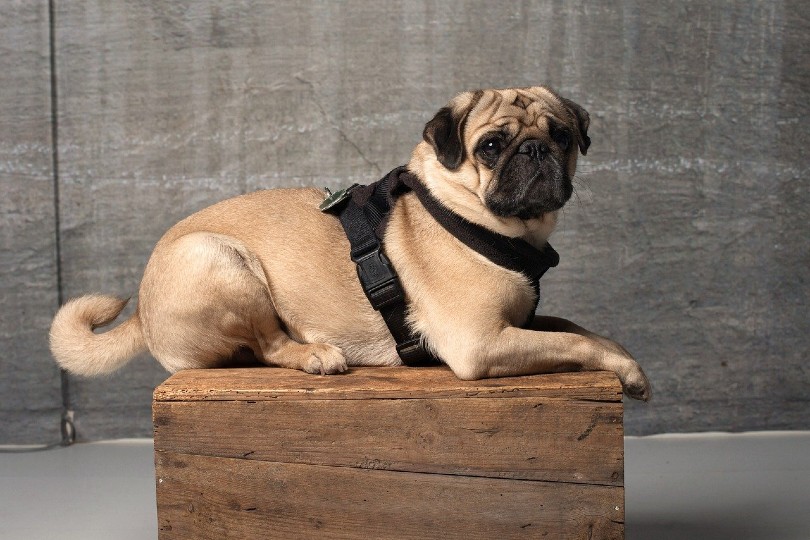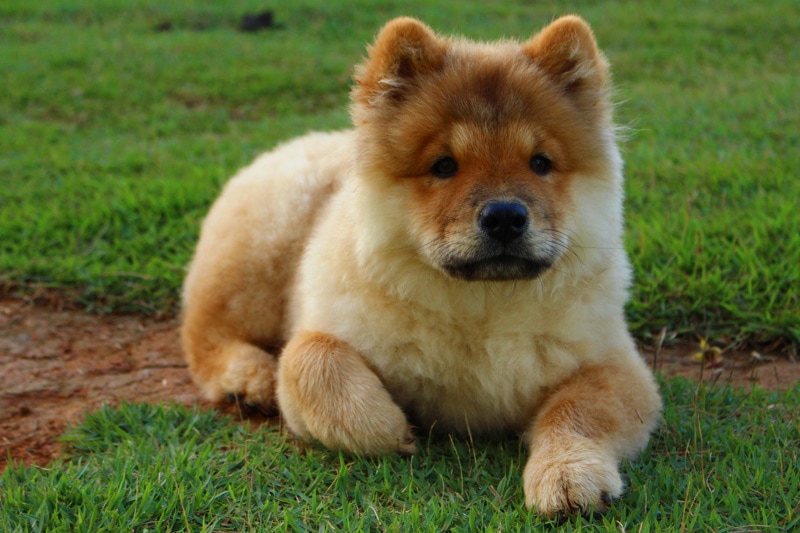Are Pugs Good for First-Time Owners? Pros & Cons
Updated on

Click to Skip Ahead
Pugs are instantly recognizable thanks to their smooshed faces and big bug eyes. These funny, loving, and friendly dogs are among the most popular breeds, but are they a good choice for someone adopting a dog for the first time?
While pugs can make excellent dogs for first-time pup owners, it depends on what you want in a pet. Do you want a dog that you can take on long hikes or one that will curl up with you on the couch? Do you want a dog that’ll look at you with stars in its eyes or one that can stay home alone all day without issue?
Keep reading to learn more about the pros and cons of adopting a pug to decide if it’s the right breed to be your first dog.
The 5 Pros of Adopting a Pug
1. Pugs Make Great Companions
The Latin term “multum in parvo” is often used to describe the Pug. This phrase translates to “a lot of dog in a small space,” and it is spookily accurate regarding this dog breed. Though pugs may take up a small space in your home, they deeply touch the souls of their humans. They quickly become best friends with their family members and are incredibly loyal.

2. Pugs Are Quiet
If you’re looking for an easygoing breed that isn’t prone to excessive barking, chewing, or digging, the Pug is perfect for you. They are more likely to snort, squeak, or grunt than bark. Their quiet and gentle nature makes them ideal for people living in apartments or with roommates.
3. Pugs Are Smart
If you’ve never owned a dog, you might feel a bit nervous about training your new pup. Dog training can be a long and arduous undertaking, but the Pugs’ intelligent and observant personality makes teaching them a bit easier than other breeds. Pugs are quick learners, especially concerning things that excite them. Be sure you hide their training treats in a spot they can’t get to because these intelligent dogs will find and eat them all between training sessions.

4. Pugs Don’t Need Much Exercise
Large dog breeds like Australian Shepherds need up to two hours of exercise daily. However, with Pugs, a little exercise will go a long way. Their small stature means they don’t need a huge backyard to run in. Instead, a brisk 20-minute walk or play session should be all your pup needs to stay healthy and happy. Pugs have a robust appetite, however, so you shouldn’t skimp out on exercise as they can become overweight.
5. Pugs Are Easygoing
Pugs tend to be lovers and not fighters. They get along well with other dogs and, thanks to their low prey drive, can share a house with cats. Their playful and adaptive temperament makes Pugs great companions for children, too. Their sturdy stature is great for rough child’s play, but you must always monitor your small children around dogs to ensure neither gets hurt.

The 4 Downsides of Adopting a Pug
1. Pugs Are Prone to Health Issues
One of the biggest downfalls of adopting a pug is that the breed is prone to several health problems. Some estimates even suggest that the Pug is nearly twice as likely to experience one or more health conditions annually compared to other dog breeds. This is due in part to the structure of their faces. The Pugs’ flat faces and bulging eyes make them so lovable and unique, but they’re also the cause of several health problems.
Pugs may be more at risk of conditions such as:
- Brachycephalic Obstructive Airway Syndrome (BOAS)
- Eye ulcerations
- Narrowed nostrils
- Skinfold infections
- Ear discharge
- Overheating
- Respiratory distress
- Allergies
- Dental disease
- Eye injuries
- Legg-Calve-Perthes Disease

While Pugs may be more prone to these issues, that does not mean your pup will develop any. However, it is still good information to have as a prospective owner as it allows you time to decide if you have the budget to pay for any potential health issues that arise. If not, you might consider investing in pet insurance to help cover your bases.
2. Pugs Shed A Lot
Pugs shed more than other dogs, thanks to their double coats. They shed all year long, though some owners suggest their Pugs shed more in the fall and spring due to temperature changes.
Thankfully, you can control excess shedding through a proper diet and regular grooming schedule.
3. Pugs Are Obsessed With Food
Pugs are a very food-driven breed, so they’ll seek food even when they’re not hungry. This propensity for eating, paired with the fact that Pugs are a brachycephalic breed, means that it is not difficult for them to become overweight. Obesity can lead to breathing problems and other issues, so always keep an eye on your Pug. They’ll get into anything and won’t discriminate between a chocolate-filled donut and their dog treats.

4. Pugs Don’t Like to Be Alone
Pugs are a very social and clingy breed that does not like being left alone for hours. They’ll be ok to be on their own for short periods, but they’ll struggle if they’re alone for an entire workday every day of the week. A Pug that spends too much time on its own may develop separation anxiety and start exhibiting problem behaviors like excessive barking or inappropriate chewing.
Pugs can be a bit intrusive due to their social personalities. They have no qualms with running up to strangers and other dogs, which can cause problems. This behavior can be contained with training, however.

Is It Ethical to Breed Pugs?
Brachycephalic dog breeds have long been the center of a morality discussion in veterinary and dog breeding communities. Is it ethical to breed dogs that are proven to be prone to certain quality-of-life-affecting health conditions? More specifically, is it cruel to continue breeding Pugs and other similar breeds when they cannot breathe normally? Is it ethically correct to breed a dog when its defining physical trait shortens its lifespan?
If you’re stuck in a moral dilemma regarding breeding Pugs, we recommend rescuing one from a shelter versus supporting a breeder.
Conclusion
Pugs can be excellent dogs for a first-time owner as they make fantastic companions and are very easy to get along with. That said, their tendency to develop health conditions can be problematic if you’re not prepared for it. We recommend researching the Pug breed before deciding to adopt one so you know exactly what you’re getting yourself into and what to expect before you bring your new pup home.
Featured Image Credit: Diana Grytsku, Freepik













